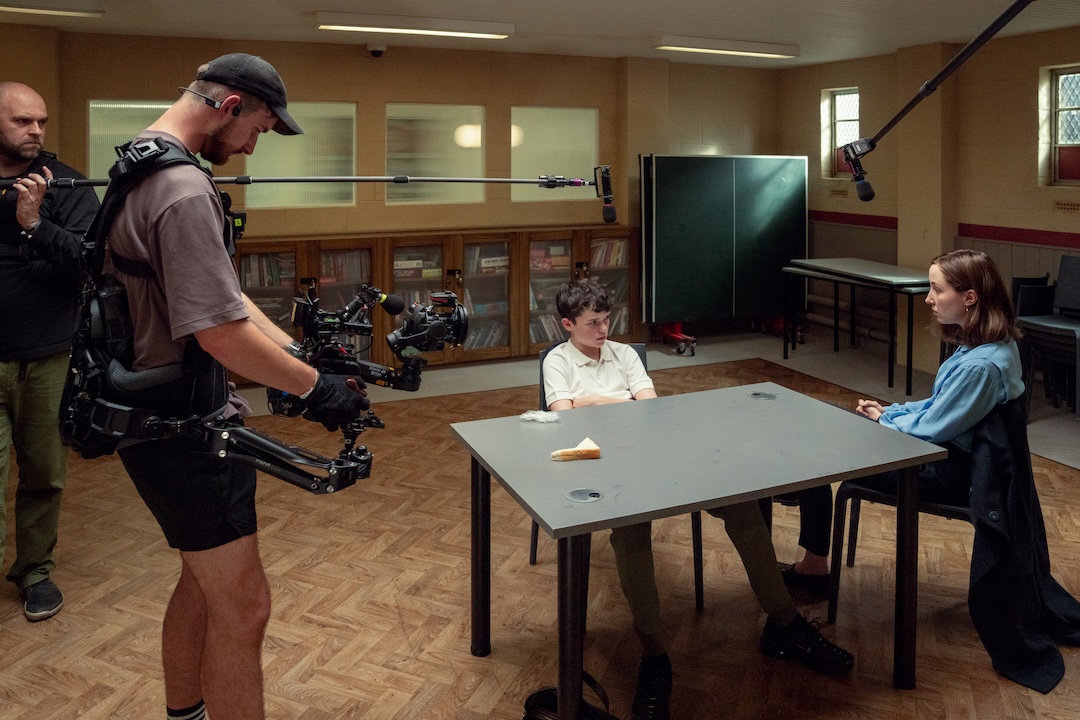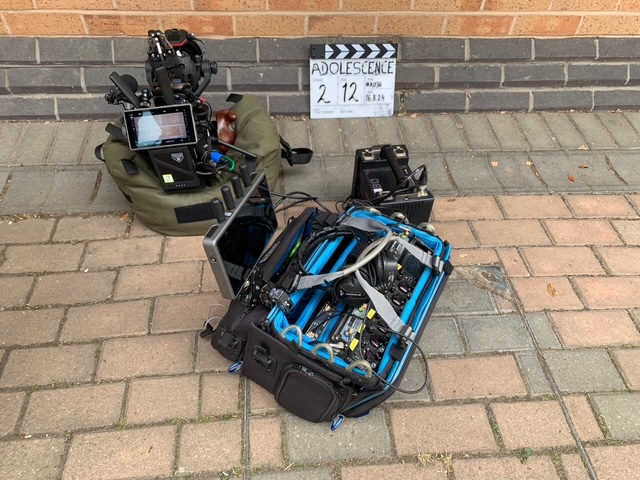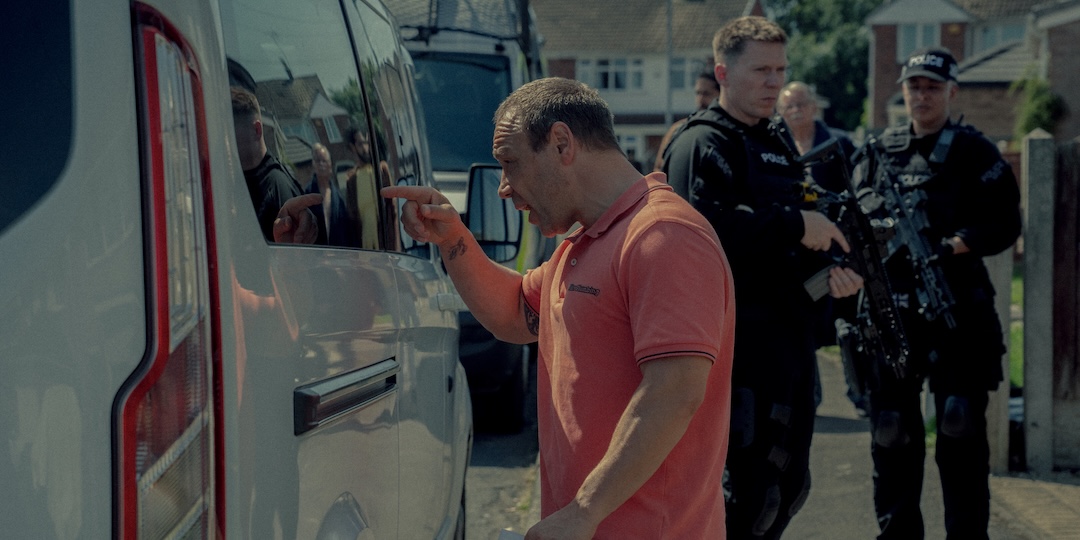
New York, NY (August 6, 2025)—Director Philip Barantini’s limited series Adolescence (Netflix, 2025) is a marvel of creative and technical achievement. Each hour-long episode was filmed as a single continuous shot, which required everyone above and below the line to perform at their peak. Every move had to be carefully planned out, rehearsed, then executed with precision.
“The concentration needed to pull off something like this is intense,” said production sound mixer Rob Entwistle, who shared duties with colleague Kiff McManus, as they had on Barantini’s previous continuous-shot film, Boiling Point (2021). “You have to be completely on top of it, in that zone, and focused in for a full hour. If you drift off for a moment, you’ve lost it, and that would be embarrassing. You don’t want to be the reason that we need to go again.”
The four-part series tells the story of 13-year-old Jamie Miller, who is arrested for murdering a classmate. In Episode 1, the police storm the Miller family home one morning and transport Jamie to the police station for interrogation. In Episode 2, they investigate the murder by talking to Jamie’s classmates at school. In Episode 3, Jamie undergoes psychological evaluation at a detention center. And in Episode 4, the Miller family deals with the consequences of Jamie’s fateful decision while struggling to understand what happened and where things went wrong. In each episode, the camera never cuts away.
2025 Emmy Award Nominations for Sound and Music Announced
Barantini is well-versed in continuous-shot films, having directed five previous projects before Adolescence. Boiling Point had many of the same camera and sound team members, including McManus, Entwistle and supervising sound editor James Drake—all winners of the 2021 British Independent Film Award, Best Sound, for their work on the 90-minute film. That experience proved invaluable when devising a plan for the limited series.
“The best lesson from Boiling Point was how to prepare for what seems like an impossible task, how to break it down,” McManus explained. “When we saw the first script of Adolescence, Rob [Entwistle] and I both thought, ‘How do we do this?’ We ended up refining our process from Boiling Point. First, you have to go through the script really carefully and find out the number of cast, because everyone in that 70-page document has a line, so that’s a radio channel you need. Then you add more radio channels for booms, some more for sends, and possibly plant mics. Once you’ve got a rough idea of the number of channels you’re going to use, you need to consider the locations. The thing about a oneshot is that if it moves to multiple locations, then you lose hardware at every step.”

KEEPING TRACK
On a typical production, the crew will set up a scene, shoot it, break everything down, and then set up somewhere else. Because Adolescence involved a single shot that moved through different settings, any equipment set up at a location (e.g., mixers, local recorders or plant mics) was left behind as the production moved.
“You lose kit for every movement, so the kit count just keeps going up and up,” McManus said with a laugh. “We used a ton of equipment. On Boiling Point, we used pretty much everything we had! And we rented more equipment. Thankfully, for Adolescence, we didn’t rent anything. We managed it with our combined kit, which between Rob and me is quite a lot.”

Entwistle and McManus use Wisycom wireless systems for transmitting/receiving, upgrading to MTP61 miniature bodypack transmitters for Adolescence. The MTP61 features an embedded recorder that saves directly to an internal 64 GB microSD card, at 32-bit floating-point resolution, with integrated Linear Time Code decoding.
“We knew we’d need the 32-bit float recording for this since you can’t set the gain for just one scene in a continuous-shot film,” McManus explained. “The gain has to be set for the entire length of the episode. Since there were so many characters and a huge dynamic range, 32-bit float allowed us to set the gain at a level that worked for the quietest bits up to the noisy parts. There are rare exceptions when an actor utterly screams, and we’d lose that on the transmission. But we immediately went to the post sound team to check it and determined that it would work.”
Discover more great stories—get a free Mix SmartBrief subscription!
The MTP61 transmitters were paired with DPA lav mics on the actors. Entwistle said: “We knew from Boiling Point what the Wisycom kit could do. We knew its capabilities. The key for Adolescence was how to make certain scenes work, like the house raid in Episode 1. Kiff set the gain for the house raid, and then the production moved to me in the police station. My gains were off because he had to set them so low for the house raid. When the recordings came in, James Drake and Jules Woods from the post sound team were on set and listened to them. They assured us that the recordings were fine.”
For boom mics, Entwistle and McManus chose Schoeps CMITs (standard and mini) for outdoor scenes and Sennheiser MKH-50s for indoors. They used the whole range of Sound Devices mixers—633, 688, 888 and Scorpio— with certain ones set up at specific locations, such as inside the police station, at the school, inside the “Video Village” van that followed the production around, or strapped to McManus on the street scenes.

